-
 Bitcoin
Bitcoin $86,269.0684
-1.60% -
 Ethereum
Ethereum $2,343.0002
-3.53% -
 Tether USDt
Tether USDt $0.9990
-0.02% -
 XRP
XRP $2.2343
-0.26% -
 BNB
BNB $610.2070
-1.36% -
 Solana
Solana $140.2900
2.66% -
 USDC
USDC $0.9999
0.01% -
 Dogecoin
Dogecoin $0.2097
2.03% -
 Cardano
Cardano $0.6749
1.28% -
 TRON
TRON $0.2293
0.44% -
 Chainlink
Chainlink $15.6409
2.67% -
 Litecoin
Litecoin $130.0225
5.77% -
 Avalanche
Avalanche $23.1207
6.87% -
 Sui
Sui $2.9119
0.02% -
 Stellar
Stellar $0.2903
0.56% -
 Shiba Inu
Shiba Inu $0.0...01473
4.49% -
 Toncoin
Toncoin $3.4685
-1.49% -
 UNUS SED LEO
UNUS SED LEO $9.1117
0.91% -
 Hedera
Hedera $0.2009
4.25% -
 Polkadot
Polkadot $5.0702
6.72% -
 MANTRA
MANTRA $7.2791
-2.91% -
 Hyperliquid
Hyperliquid $20.4871
4.40% -
 Bitcoin Cash
Bitcoin Cash $301.9445
3.53% -
 Ethena USDe
Ethena USDe $0.9993
0.00% -
 Dai
Dai $0.9998
0.01% -
 Bitget Token
Bitget Token $4.1134
0.14% -
 Uniswap
Uniswap $8.1934
1.97% -
 Monero
Monero $212.7258
-3.23% -
 NEAR Protocol
NEAR Protocol $3.1179
3.74% -
 Aptos
Aptos $6.1616
10.59%
What are the typical representatives of L1 blockchain?
Ethereum, the pioneer of L1 blockchain, enables the development of smart contracts and decentralized applications, the cornerstone of the DeFi ecosystem.
Feb 27, 2025 at 05:37 pm
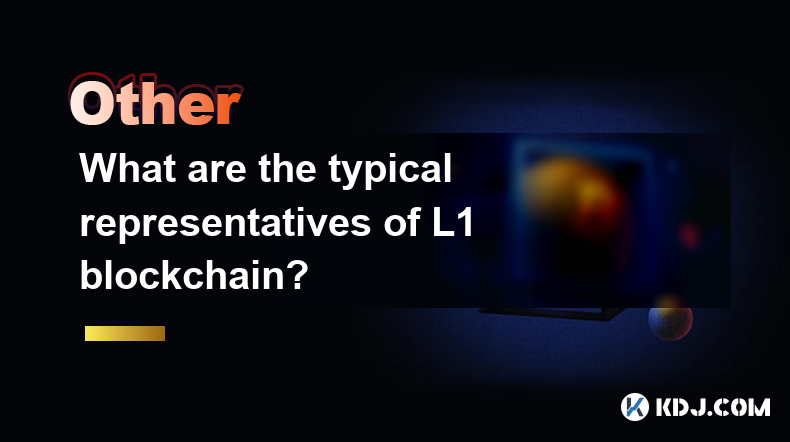
Key Points
- Ethereum: A decentralized platform that enables the creation of smart contracts and decentralized applications.
- Bitcoin: The first and most well-known cryptocurrency, designed to facilitate secure and anonymous transactions.
- Solana: A high-performance blockchain platform known for its low transaction fees and fast speeds.
- Cardano: A proof-of-stake blockchain with a focus on scalability and security.
- Polkadot: A multi-chain framework that allows for interoperability between different blockchains.
- Tezos: A self-amending blockchain with a strong focus on formal verification.
- Avalanche: A scalable and highly efficient blockchain platform that supports smart contracts.
- Binance Smart Chain: A high-performance blockchain from Binance that is compatible with Ethereum's EVM.
Article Content
1. Ethereum: The Pioneer of L1 Blockchain
- Ethereum is a decentralized platform that enables the creation of smart contracts, which are self-executing agreements that run on the blockchain.
- It has been the cornerstone of the decentralized finance (DeFi) movement, enabling the creation of a vast ecosystem of decentralized financial applications.
- Ethereum's native cryptocurrency, Ether (ETH), is the second-most valuable cryptocurrency by market capitalization.
2. Bitcoin: The Originator and Store of Value
- Bitcoin is the first and most well-known cryptocurrency, introduced in 2009 by an anonymous creator known as Satoshi Nakamoto.
- It is primarily used as a store of value and a medium of exchange, rather than a platform for building applications.
- Bitcoin has a limited supply of 21 million coins, making it a scarce asset with potential long-term value.
3. Solana: The High-Performance Blockchain
- Solana is a high-performance blockchain platform that leverages Proof-of-History (PoH) consensus to achieve lightning-fast transaction speeds and low fees.
- It has attracted attention in the DeFi and non-fungible token (NFT) spaces due to its scalability and cost-effectiveness.
- Solana's native cryptocurrency, SOL, is among the top ten cryptocurrencies by market capitalization.
4. Cardano: The Scalable and Secure Proof-of-Stake Blockchain
- Cardano is a proof-of-stake blockchain that emphasizes scalability and security.
- It utilizes a two-layer architecture, with one layer dedicated to processing transactions and another layer for handling smart contracts.
- Cardano's native cryptocurrency, ADA, is well-regarded for its strong fundamentals and has a significant market capitalization.
5. Polkadot: The Interoperable Blockchain Framework
- Polkadot is a multi-chain framework that allows for interoperability between different blockchains.
- It features a network of interconnected blockchains, known as parachains, that can communicate with each other securely.
- Polkadot's native cryptocurrency, DOT, is used to secure the network and access parachains.
6. Tezos: The Self-Amending Blockchain
- Tezos is a self-amending blockchain that prioritizes formal verification to ensure security and reliability.
- It utilizes a unique on-chain governance mechanism that allows stakeholders to vote on protocol upgrades.
- Tezos' native cryptocurrency, XTZ, is used to secure the network and participate in governance.
7. Avalanche: The Scalable and Highly Efficient Platform
- Avalanche is a scalable and highly efficient blockchain platform that supports smart contracts.
- It utilizes a novel consensus mechanism called Snowball that offers fast transaction speeds and high throughput.
- Avalanche's native cryptocurrency, AVAX, is used to secure the network and pay transaction fees.
8. Binance Smart Chain: The EVM-Compatible Blockchain
- Binance Smart Chain (BSC) is a high-performance blockchain from Binance that is compatible with Ethereum's EVM.
- It enables developers to migrate Ethereum-based applications to BSC with minimal hassle.
- BSC's native cryptocurrency, BNB, is used to pay transaction fees and secure the network.
FAQs
Q: What are the key differences between these L1 blockchains?
A: The key differences lie in their consensus mechanisms, scalability, security, and use cases.
Q: Which L1 blockchain is the most scalable?
A: Solana and Avalanche are generally considered the most scalable L1 blockchains.
Q: Which L1 blockchain has the strongest security?
A: Bitcoin and Tezos have a reputation for robust security.
Q: Which L1 blockchain is best suited for decentralized applications (dApps)?
A: Ethereum and Polkadot are popular choices for dApp development.
Q: Which L1 blockchain is best for non-fungible tokens (NFTs)?
A: Solana and Binance Smart Chain offer high-performance and cost-effective solutions for NFTs.
Disclaimer:info@kdj.com
The information provided is not trading advice. kdj.com does not assume any responsibility for any investments made based on the information provided in this article. Cryptocurrencies are highly volatile and it is highly recommended that you invest with caution after thorough research!
If you believe that the content used on this website infringes your copyright, please contact us immediately (info@kdj.com) and we will delete it promptly.
- Panshibi (SHIBI) Exceeds $1 Million In Presale, Gaining Unstoppable Momentum
- 2025-02-27 21:10:32
- Discover if Pepe's hype is truly dead after a 20 percent weekly drop. Get the latest Pepe price prediction and see how Dawgz AI Presale could change the game.
- 2025-02-27 21:10:32
- The US Securities and Exchange Commission (SEC) has dropped its investigation of Gemini and will not pursue an enforcement action.
- 2025-02-27 21:05:33
- A Monero (XMR) Whale Just Invested $50,000 Into This Viral Meme Coin
- 2025-02-27 21:05:33
- XYZVerse's Path to Recovery Could Be Its Ticket to G.O.A.T. Status
- 2025-02-27 21:05:33
- When it comes to Dogwifhat price prediction, opinions are all over the place.
- 2025-02-27 21:05:33
Related knowledge
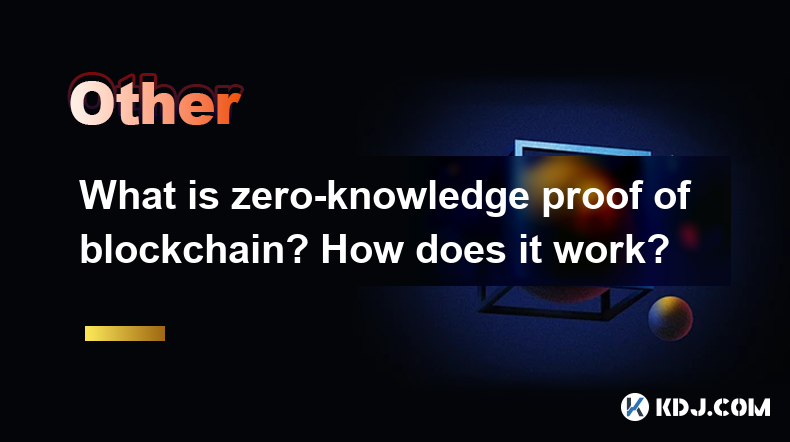
What is zero-knowledge proof of blockchain? How does it work?
Feb 27,2025 at 03:55am
What is Zero-Knowledge Proof of Blockchain? How Does it Work?Key Points:Definition: Zero-knowledge proof (ZKP) is a cryptographic method allowing one party (the prover) to prove to another party (the verifier) that a statement is true without revealing any information beyond the truth of the statement itself. In the blockchain context, this translates t...
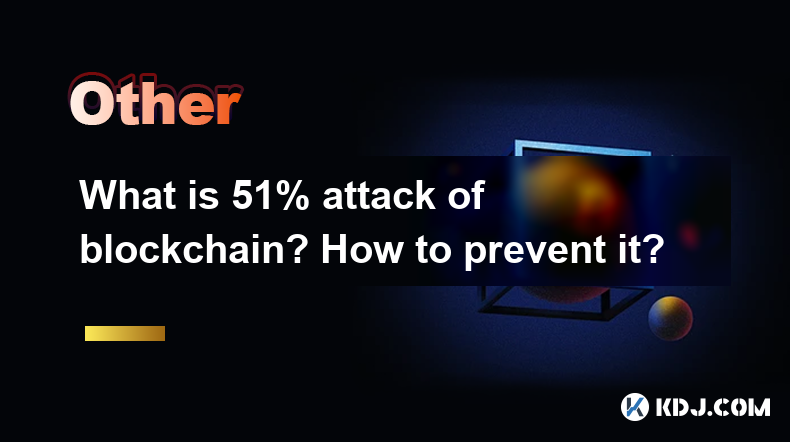
What is 51% attack of blockchain? How to prevent it?
Feb 27,2025 at 03:19am
What is a 51% Attack of Blockchain? How to Prevent It?Key Points:Understanding the 51% Attack: A 51% attack, also known as a majority attack, occurs when a single entity or a group of colluding entities gains control of over 50% of the network's hashing power (in Proof-of-Work blockchains) or stake (in Proof-of-Stake blockchains). This allows them to ma...
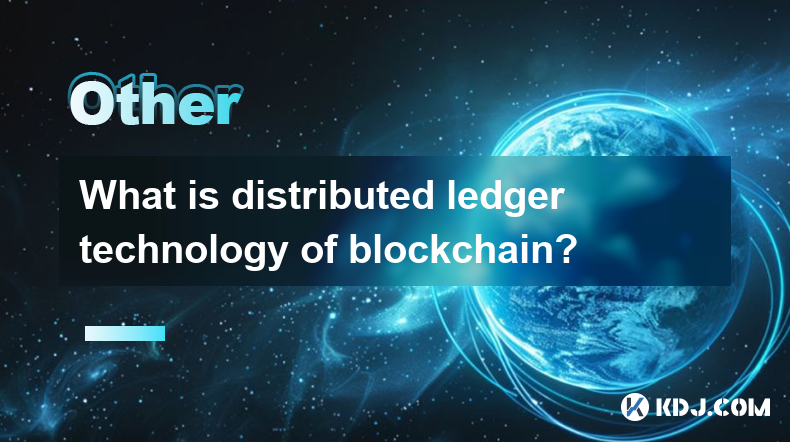
What is distributed ledger technology of blockchain?
Feb 27,2025 at 05:54pm
What is Distributed Ledger Technology of Blockchain?Key Points:Decentralization: Blockchain's core strength lies in its decentralized nature, eliminating single points of failure and enhancing security and resilience. We will explore the implications of this decentralized architecture and how it contrasts with traditional centralized systems.Immutabilit...
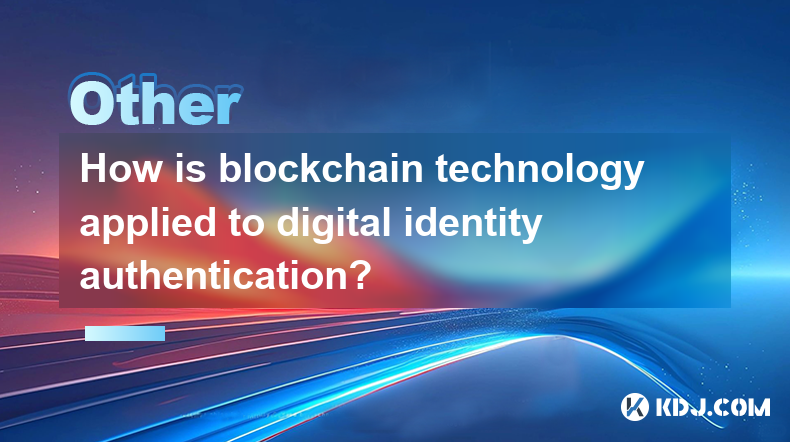
How is blockchain technology applied to digital identity authentication?
Feb 27,2025 at 04:55pm
How is Blockchain Technology Applied to Digital Identity Authentication?Key Points:Blockchain's decentralized and immutable nature offers enhanced security and trust for digital identity systems, mitigating risks associated with centralized databases.Various blockchain-based solutions leverage cryptographic techniques to ensure data integrity and user p...
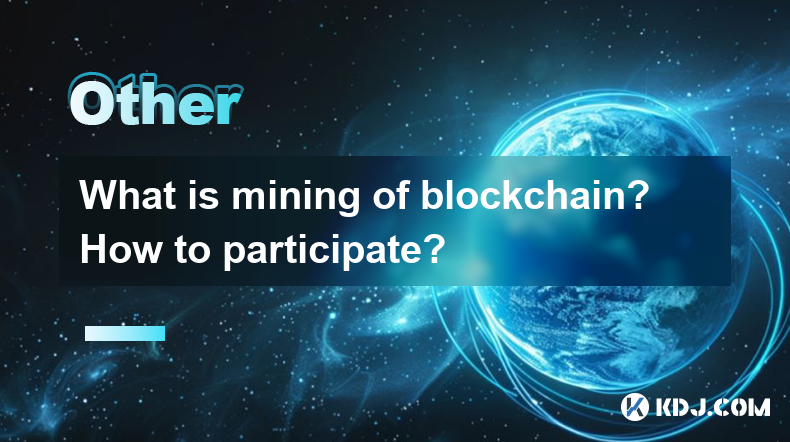
What is mining of blockchain? How to participate?
Feb 27,2025 at 12:36am
What is Mining of Blockchain? How to Participate?Key Points:Understanding Blockchain Mining: A deep dive into the process, its purpose within the blockchain ecosystem, and the different consensus mechanisms employed.Types of Mining: Exploring Proof-of-Work (PoW), Proof-of-Stake (PoS), and other less common consensus mechanisms, highlighting their differ...
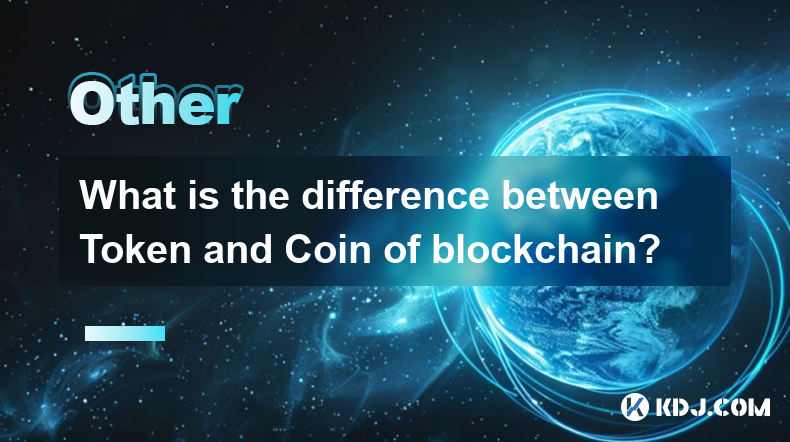
What is the difference between Token and Coin of blockchain?
Feb 27,2025 at 03:24am
What is the Difference Between Token and Coin of Blockchain?Key Points:Coins: Represent native cryptocurrencies built on their own blockchain networks. They serve as the primary medium of exchange within their respective ecosystems and are often used for transaction fees and staking. Examples include Bitcoin (BTC) and Litecoin (LTC).Tokens: Represent as...

What is zero-knowledge proof of blockchain? How does it work?
Feb 27,2025 at 03:55am
What is Zero-Knowledge Proof of Blockchain? How Does it Work?Key Points:Definition: Zero-knowledge proof (ZKP) is a cryptographic method allowing one party (the prover) to prove to another party (the verifier) that a statement is true without revealing any information beyond the truth of the statement itself. In the blockchain context, this translates t...

What is 51% attack of blockchain? How to prevent it?
Feb 27,2025 at 03:19am
What is a 51% Attack of Blockchain? How to Prevent It?Key Points:Understanding the 51% Attack: A 51% attack, also known as a majority attack, occurs when a single entity or a group of colluding entities gains control of over 50% of the network's hashing power (in Proof-of-Work blockchains) or stake (in Proof-of-Stake blockchains). This allows them to ma...

What is distributed ledger technology of blockchain?
Feb 27,2025 at 05:54pm
What is Distributed Ledger Technology of Blockchain?Key Points:Decentralization: Blockchain's core strength lies in its decentralized nature, eliminating single points of failure and enhancing security and resilience. We will explore the implications of this decentralized architecture and how it contrasts with traditional centralized systems.Immutabilit...

How is blockchain technology applied to digital identity authentication?
Feb 27,2025 at 04:55pm
How is Blockchain Technology Applied to Digital Identity Authentication?Key Points:Blockchain's decentralized and immutable nature offers enhanced security and trust for digital identity systems, mitigating risks associated with centralized databases.Various blockchain-based solutions leverage cryptographic techniques to ensure data integrity and user p...

What is mining of blockchain? How to participate?
Feb 27,2025 at 12:36am
What is Mining of Blockchain? How to Participate?Key Points:Understanding Blockchain Mining: A deep dive into the process, its purpose within the blockchain ecosystem, and the different consensus mechanisms employed.Types of Mining: Exploring Proof-of-Work (PoW), Proof-of-Stake (PoS), and other less common consensus mechanisms, highlighting their differ...

What is the difference between Token and Coin of blockchain?
Feb 27,2025 at 03:24am
What is the Difference Between Token and Coin of Blockchain?Key Points:Coins: Represent native cryptocurrencies built on their own blockchain networks. They serve as the primary medium of exchange within their respective ecosystems and are often used for transaction fees and staking. Examples include Bitcoin (BTC) and Litecoin (LTC).Tokens: Represent as...
See all articles

















































































